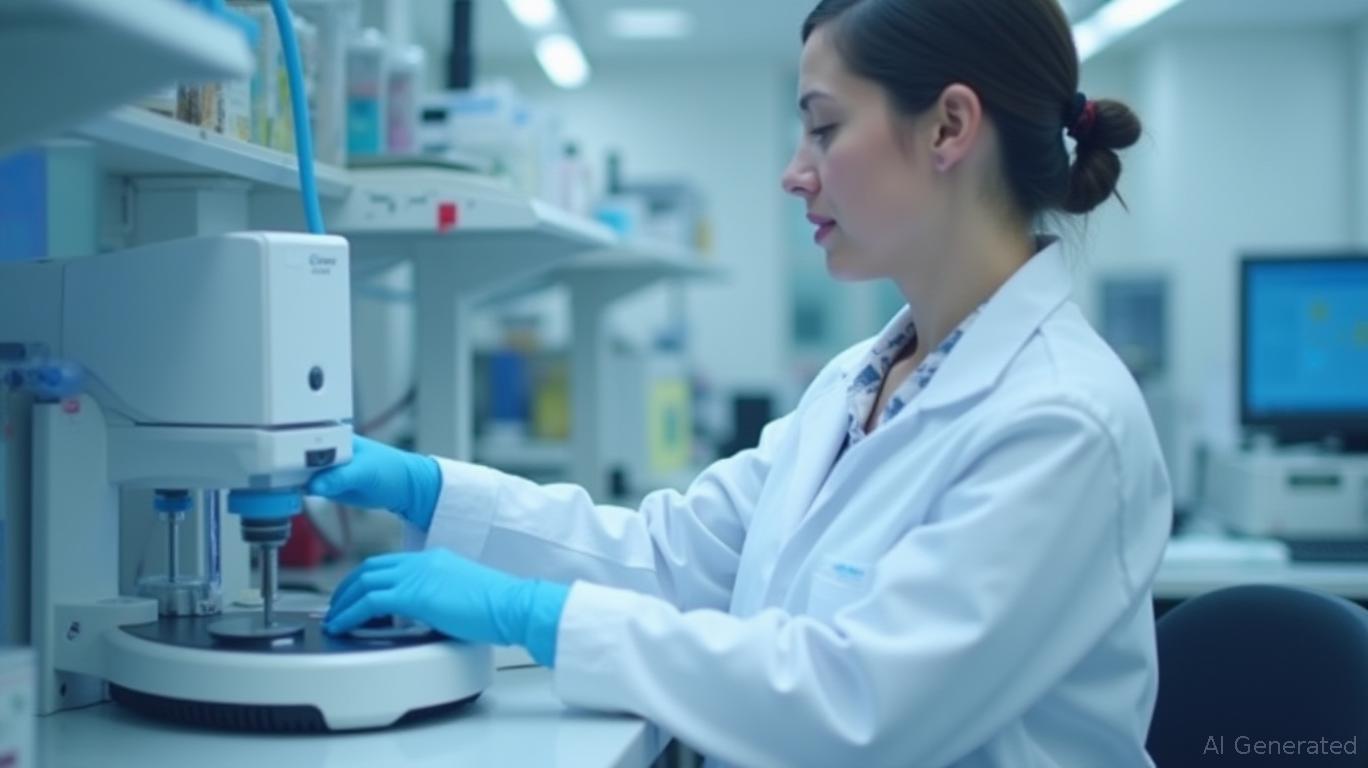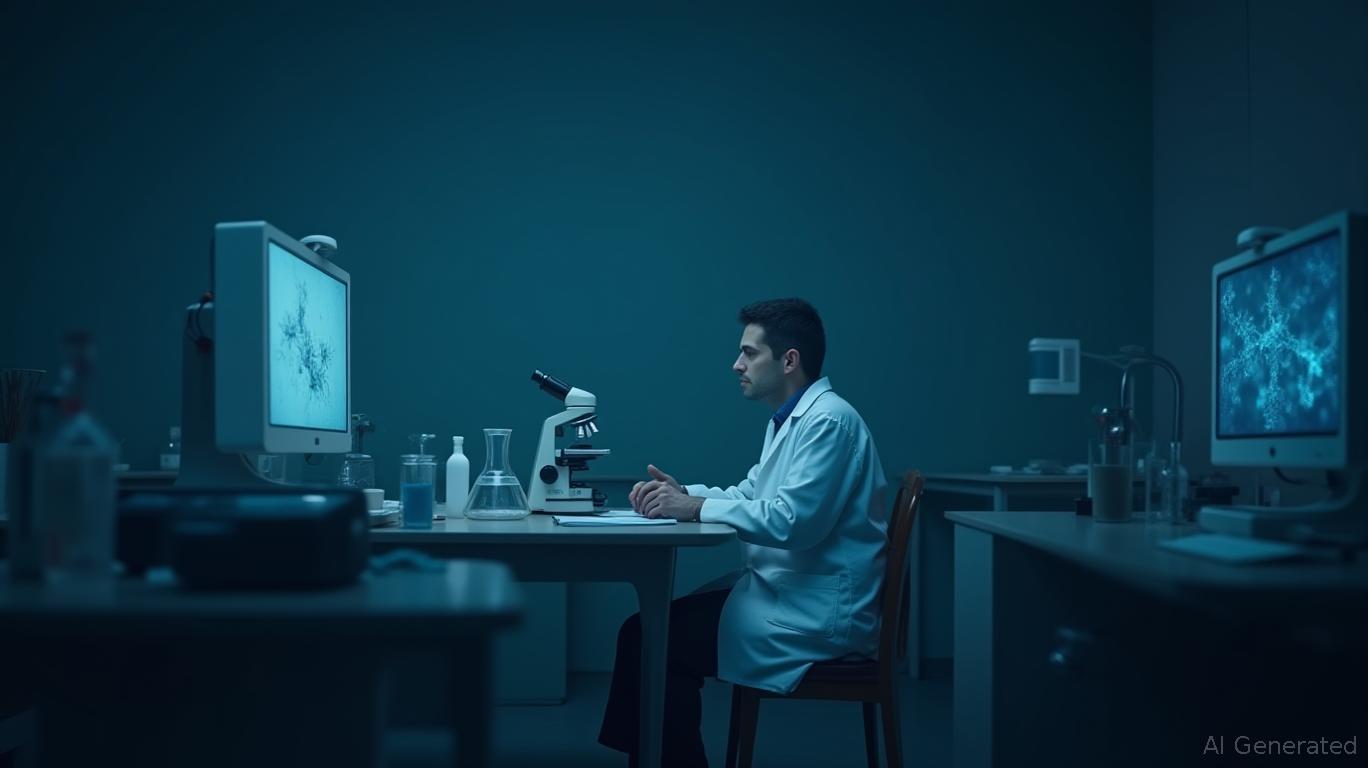Harvard Bioscience: A Hidden Turnaround in Biotech Infrastructure?
The biotech sector has faced relentless headwinds—from NIH funding uncertainties to trade policy shifts—yet some companies are quietly positioning themselves to capitalize on long-term R&D recovery. Harvard Bioscience (NASDAQ: HBIO), despite reporting a staggering $50.3M net loss in Q1 2025, is one such play. Beneath the headline numbers lies a story of strategic discipline, niche dominance, and undervaluation that could make this a compelling contrarian buy.
Ask Aime: "Can Harvard Bioscience's resilience amid industry turmoil make it a profitable contrarian buy?"

The Shocking Loss That’s Not the Whole Story
The Q1 net loss, while alarming, is almost entirely attributable to a one-time $48M goodwill impairment charge—a non-cash expense tied to strategic asset revaluation. Strip out this charge and other non-recurring costs (like ERP migration and CFO transition expenses), and the adjusted loss narrows to just 1 cent/share, with adjusted EBITDA still positive at $0.8M. This stark contrast highlights a critical truth: Harvard’s operational core is intact, and its struggles are temporary, not terminal.
The ERP migration, though disruptive in the short term, is now operational in 80% of manufacturing operations, with CFO Mark Frost (a seasoned public-company executive) now at the helm to stabilize execution. Meanwhile, cash flow improved to $3.0M in Q1, up 114% year-over-year, underscoring liquidity resilience despite the headlines.
Ask Aime: "Is Harvard Bioscience's recent Q1 loss an opportunity for investors?"
The Strategic Focus on High-Margin Tech
While Harvard’s revenue dipped to $21.8M in Q1 (down from $24.5M), its strategic pivot to premium preclinical tools—like the MeshMEA organoid system and SoHo telemetry—is yielding traction. These systems, which enable advanced drug discovery and toxicity testing, command 55–57% gross margins and are seeing accelerating adoption.
Q2 guidance of $18–20M in revenue aligns with this focus, as cost-reduction measures ($1M in quarterly savings starting Q2) begin to offset macroeconomic drag. The company is doubling down on its niche: biotech infrastructure for cutting-edge R&D. This is a $2B+ market growing at 8% annually, and Harvard’s 15% share positions it as a leader in labs worldwide.
Undervalued and Backed by Insiders
At current levels, Harvard trades at $0.15/share, far below analyst consensus of $0.35/share fair value. This gap is even starker when considering insider buying: AMH Equity Ltd added 35.5% to its holdings in Q1, while executives have purchased shares at these depressed prices. The market appears to be pricing in short-term pain while ignoring long-term potential.
Catalysts on the Horizon
- Operational Stability: ERP teething issues should fade in Q2, with Frost’s leadership accelerating efficiency gains.
- Product Showcases: Upcoming conferences will highlight adoption of MeshMEA and SoHo, reinforcing their role in organoid and telemetry research.
- Debt Refinancing: A June deadline looms, but management’s focus on cost cuts and cash flow suggests they’ll navigate this without dilution.
Is This the Bottom?
Harvard Bioscience isn’t a slam-dunk bet—it faces NIH funding risks and macroeconomic uncertainty. But at $0.15/share, it’s priced for near-term failure. For investors with a 2–3 year horizon, this is a rare chance to buy a $0.35 fair-value asset at 43% discount, backed by:
- A niche market with 8% annual growth,
- Margin-stabilizing premium products,
- Insider confidence, and
- A leadership team now in full control post-ERP.
The Q1 loss was a one-time stumble in a race toward biotech’s next wave. For those willing to look past the headlines, Harvard Bioscience is a compelling undervalued opportunity to bet on long-term R&D recovery. The question isn’t whether to avoid it—it’s whether you can afford to miss it.

_b905d9341749265671656.jpg)








